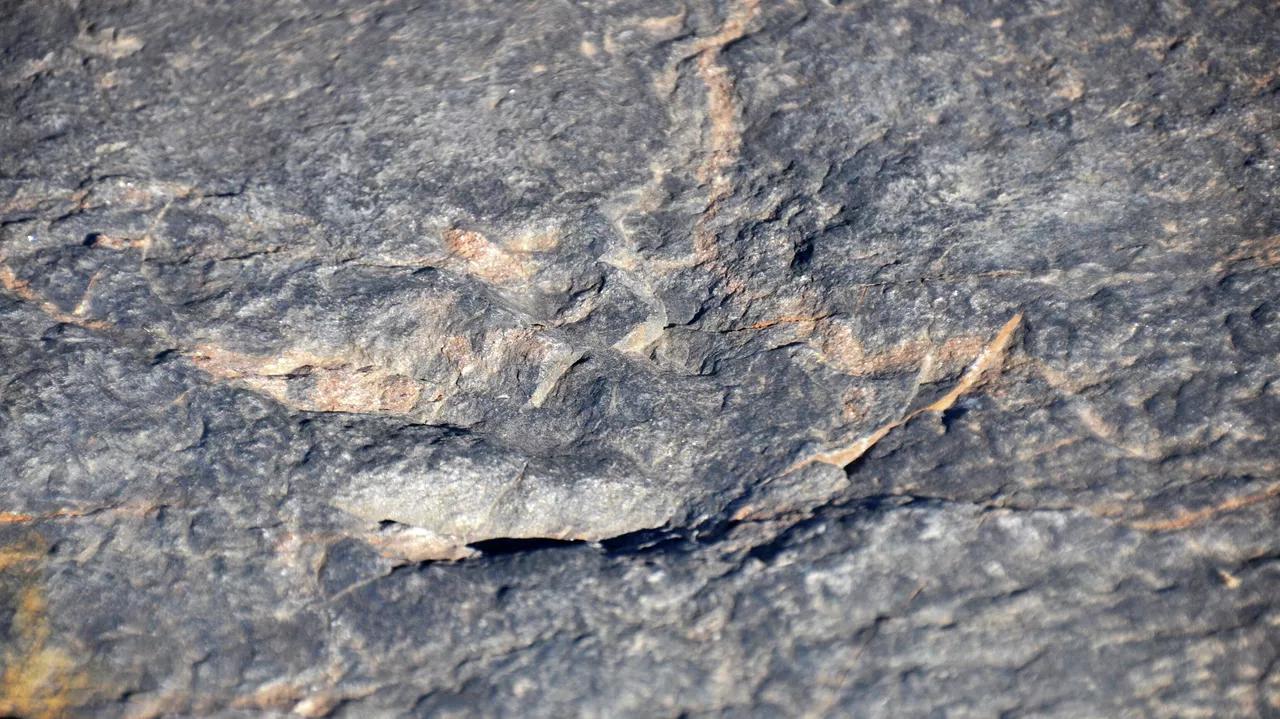Africa-Press – Sierra-Leone. Before they became the planet’s dominant terrestrial vertebrates in the Jurassic period, non-avian dinosaurs were in the shadow of their reptilian relatives – archosaurs – which really reigned on a single supercontinent of Pangea and after its split until 201.3 million years ago, when the mass extinction event ended the period.
A new study published in the journal Science Advances challenges the notion that dinosaurs preferred the heat in the early stages of their evolution. It offers the first real proof that Triassic dinosaur species, at the time a small group confined mostly to the polar areas, often experienced freezing temperatures there. According to the research, dinosaur footprints and peculiar rock shards that could only have been left behind by ice are the unmistakable signs of said find.
The international team authors argued cold snaps that were already occurring at the poles moved to lower latitudes during the mass extinction, eradicating the coldblooded reptiles. Because they were already adapted, dinosaurs escaped the evolutionary bottleneck and expanded to rule the earth for the next 130 million years.
The research was based on recent excavations in northwest China’s Junggar Basin, a desolate desert. Dinosaurs are believed to have initially evolved during the Triassic Period, some 231 million years ago, in temperate southern latitudes, when the majority of the planet’s surface was united together in a single enormous continent Pangea.
By around 214 million years ago, they had reached the far north, according to the scientists. The more extensive tropical and subtropical regions between were dominated by reptiles, including crocodile relatives and other terrifying animals, until the great extinction about 202 million years ago.
Temperatures during the Triassic period had likely been high due to atmospheric carbon dioxide concentrations as the majority of the Jurassic ranged at or over 2,000 parts per million, which is five times today’s levels.
Polar ice caps were not present during that era, and excavations have revealed that polar regions once supported deciduous trees. Even with all that much CO2, the high latitudes might have been chilly at times since they would have had little sunlight for a large portion of the year and temperatures would have dropped at least periodically.
But until recently, no one has shown any tangible evidence that they froze, and that is where the new research brings some change to the theory.
Death of Pangean World & New Beginning for Dinosaurs
Over three-quarters of all terrestrial and marine species on the planet, including all large reptiles and corals, went extinct at the end of the Triassic Period during a geologically brief period of perhaps a million years. Some burrowing species, such as turtles, as well as a few early mammals, survived. Although it is unknown exactly what occurred, many experts believe it was caused by a succession of enormous volcanic eruptions that may have lasted for hundreds of years at a time.
Around this period, Pangea began to fragment, creating what has become the Atlantic Ocean and dividing the modern-day Americas from Europe, Africa and Asia. The eruptions would have, among other things, caused atmospheric carbon dioxide to soar above its already high levels, spiking temperatures on land and making ocean waters too acidic for many organisms to thrive.
A third element is mentioned by the study’s authors.
The strongest phases of the eruptions would have released sulfur aerosols that reflected so much sunlight that they repeatedly generated worldwide volcanic winters that outweighed high greenhouse gas concentrations. Even the tropics might have experienced prolonged freezing conditions during these winters, which could have lasted a decade or longer.
According to the research, this killed uninsulated reptiles while allowing cold-adapted, insulated dinosaurs to survive.
Fine-grained sandstone and siltstone deposits from ancient lake bottoms in the Junggar Basin became the researchers’ primary source of evidence. The late Triassic Period, the mass extinction, and other events all caused the sediments to form some 206 million years ago.
The basin was located at roughly 71 degrees north, high above the Arctic Circle, at that time, before landmasses began to reorganize themselves, as they do throughout the entire history of our planet. Dinosaurs were present along shorelines, as evidenced by the authors’ and others’ discovery of dinosaur footprints. The researchers discovered pebbles up to 1.5 centimeters in diameter among the typically fine sediments in the lakes itself.
As the pebbles had no business being there since they were far from any visible beach, it was determined they were ice-rafted debris, or IRD for short, and that was the only possible explanation for their existence, the authors argued.
In a nutshell, IRD is produced when ice forms against a coastal landmass and absorbs pieces of subsurface rock. The ice eventually breaks free and flows into the nearby water body. The rocks fall to the bottom and mix with the typical fine sediments as it melts.
In the oceans, where it is carried by glacial icebergs, ancient IRD has been extensively investigated by geologists, but lakebed research has been sparse, and the Junggar Basin discovery reportedly fills this gap. According to the scientists, the pebbles were probably gathered during the winter when lake waters along pebbly shorelines froze. When the weather warmed up again, pieces of the ice drifted away while carrying samples of the pebbles, where they later dumped them. And it seems that how the dinosaurs succeeded in such harsh conditions no longer causes any doubts among the vast majority of paleontologists.
Since the 1990s, there has been mounting proof that many, if not all, non-avian dinosaurs, including tyrannosaurs, had primitive feathers. Some coverings may have served as mating displays if not for flying, but the researchers claim that insulation was their primary function. There is strong evidence that many dinosaurs had warm-blooded, high-metabolism systems, in contrast to the cold-blooded reptiles. In cold climates, dinosaurs would have benefited from both characteristics.
According to the researchers comments on their study, they would like to see more researchers hunting for fossils in once polar regions like the Junggar Basin, in order to better comprehend this time period.
“The fossil record is very bad, and no one is prospecting,” Olsen said. “These rocks are gray and black, and it is much harder to prospect [for fossils] in these strata. Most paleontologists are attracted to the late Jurassic, where it’s known there are many big skeletons to be had. The paleo-Arctic is basically ignored.”
For More News And Analysis About Sierra-Leone Follow Africa-Press






